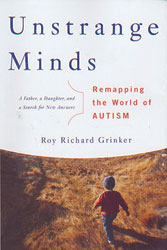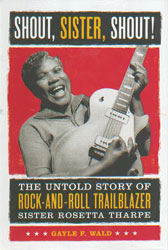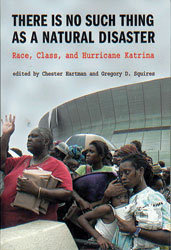|

A Closer Look at Autism
 The
numbers are staggering. From 1992 to 2000, the
U.S. Department of Education reported a 544 percent
increase in diagnoses of autism. While some may
be crying epidemic, author and anthropologist
Roy Richard Grinker argues in Unstrange Minds:
Remapping the World of Autism (Basic Books,
2007) that the high rates are actually an achievement.
Today, Grinker says, we are correctly diagnosing
autism cases and allowing children to receive
the social and educational services that they
need. The
numbers are staggering. From 1992 to 2000, the
U.S. Department of Education reported a 544 percent
increase in diagnoses of autism. While some may
be crying epidemic, author and anthropologist
Roy Richard Grinker argues in Unstrange Minds:
Remapping the World of Autism (Basic Books,
2007) that the high rates are actually an achievement.
Today, Grinker says, we are correctly diagnosing
autism cases and allowing children to receive
the social and educational services that they
need.
“People with autism in the past weren’t
called autistic. They were diagnosed with schizophrenia
or mental retardation or something else,”
says Grinker, professor of anthropology and director
of the Institute for Ethnographic Research at
GW.
Now, he explains, improved, broader diagnostic
criteria and greater public awareness are making
case numbers rise.
For Grinker, the autism research is personal.
When his daughter Isabel was diagnosed with autism
in 1994, it was still considered a rare disorder.
Thirsty for information, Grinker set out to talk
with parents, physicians, advocates, and scientists
about the developmental disability. He traveled
around the country and to Korea, South Africa,
and other parts of the globe that have only recently
begun to learn about autism to explore the cultural
influences. What he found was simple: “No
matter where you are in the world, people with
a disability have more social support and more
opportunities when the public knows and understands
the word for that disability,” Grinker says.
The book, a blend of research and personal experience,
is striking a chord with both parents and scientists
who want to highlight the complexity of the issue.
Simon Baron-Cohen, director of the Autism Center
at Cambridge University, writes that Unstrange
Minds “conveys deep parental concern,
and reminds us of the unmet needs of such children.”
With a rate of one in every 166 children being
diagnosed with the disability, Grinker shows us
that autism is no longer an anomaly. It is, in
fact, “unstrange.”
Grinker is author of four other books, including
In The Arms of Africa: The Life of Colin M.
Turnbull. He is also the editor-in-chief
of Anthropological Quarterly.
Rethinking Rock and Roll
 She
inspired Elvis. She influenced Little Richard.
Johnny Cash said she was a star. She
inspired Elvis. She influenced Little Richard.
Johnny Cash said she was a star.
While her sound helped pioneer a new genre, gospel
singer Rosetta Tharpe is still largely unrecognized
for her early contributions to popular music.
In Shout, Sister, Shout!: The Untold Story
of Rock and Roll Trailblazer Sister Rosetta Tharpe
(Beacon Press, 2007), GW English Professor Gayle
F. Wald offers the first biography of Tharpe,
detailing how she overcame racism and sexism to
create rock’s original roots.
The book, which chronicles Tharpe’s 35-year
career, weaves together interviews with more than
150 people who knew or worked with Tharpe during
a time when she navigated complicated social and
cultural worlds.
A gospel superstar and guitar virtuoso, Tharpe
cut her chords playing the Pentecostal circuit
with her preacher mother, later graduating to
such venues as the Apollo Theater and Carnegie
Hall. Tharpe, Wald writes, flirted with blues
and swing in a decision to cross over to secular
music in the mid-1950s.
Wald writes that Tharpe, a woman of confidence
and conviction, broke all barriers—black
and white, North and South, male and female, gospel
and secular— to set standards for the basic
tenets of 20th-century rock.
“Men even played like her,”
Wald writes. “Few of Rosetta’s male
peers, in gospel or any other field, would have
cared to admit the fact, however, especially in
an age when masculinity and guitar skills were
inextricably linked.”
American blues-R&B singer Bonnie Raitt writes
that Tharpe “blazed the trail for the rest
of us women…[and] has long been deserving
of wider recognition.”
Shout, Sister, Shout! does just that
by going beyond biography. It suggests that we
rethink our American music history.
Wald also wrote Crossing the Line: Racial
Passing in Twentieth Century U.S. Literature and
Culture. In 2003, she penned the liner notes
for a Rosetta Tharpe tribute album.
Deconstructing the Katrina Disaster
 The
hurricane that pummeled the Gulf Coast in 2005—destroying
homes, flooding communities, and shattering families—was
the impetus for a larger social calamity, argues
Gregory D. Squires, professor of sociology and
of public policy and public administration. In
the book There is No Such Thing as a Natural
Disaster (Routledge, 2006), co-editors Squires
and Chester Hartman, adjunct professor of sociology,
detail the deeper forces of structural racism
and social inequality that turned these Southern
cities upside down. The
hurricane that pummeled the Gulf Coast in 2005—destroying
homes, flooding communities, and shattering families—was
the impetus for a larger social calamity, argues
Gregory D. Squires, professor of sociology and
of public policy and public administration. In
the book There is No Such Thing as a Natural
Disaster (Routledge, 2006), co-editors Squires
and Chester Hartman, adjunct professor of sociology,
detail the deeper forces of structural racism
and social inequality that turned these Southern
cities upside down.
Nature, they say, had little to do with it.
“Inequities associated with race, class,
gender, and other socially constructed markers
are not inevitable,” Squires and Hartman
write. “They reflect the conscious choices
made by political and economic decision-makers
and implemented by public and private institutions.”
The book, a collection of essays by scholars
and policy activists, tackles the historical context
of disaster in urban America, post-Katrina housing
policy, education policy, urban planning, politics,
and the future of New Orleans’ economic
development.
With a broad-brush picture of the impact of Katrina,
the book lingers on how and why the poor and people
of color suffered disproportionably.
Squires explains that the challenges of rebuilding
New Orleans often reflect those in metropolitan
areas around the nation, where many communities
are struggling to provide decent housing, create
family-supporting jobs, build and maintain decent
schools, and more.
“The citizens of New Orleans seem prepared
to face these challenges,” he and Hartman
write. “Hopefully, the public, private,
and nonprofit institutions will be up to the task.”
—Jaime Ciavarra
|